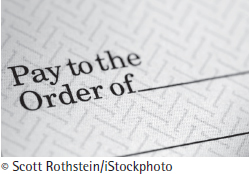OVERVIEW OF ERP SYSTEMS (STUDY OBJECTIVE 1)
As you studied the chapters in this book that described business processes and the resulting data, you saw that there are processes which deal with a very high volume of transactions. For example, sales and purchase processes have a high volume of recurring transactions in which much data are generated, processed, and stored. These processes also result in data that must be entered and summarized in general ledger processes. Earlier chapters also examined how IT systems can improve the efficiency and cost of those processes. Ideally, all of an organization's business processes would be controlled by one software system that incorporates all business processes. That is, one software system would collect, process, store, and report the data resulting from all revenue, expenditures, conversion, and administrative processes. This is the intention of an enterprise resource planning (ERP) system. The ERP system is the IT infrastructure that facilitates e-commerce and e-business. ERP systems and e-business are mutually supporting parts of the organization. ERP systems enhance e-business, and e-business has enhanced the process efficiency of ERP systems.
THE REAL WORLD

Agri-Beef Co. is a privately held Idaho firm with annual sales in excess of $500 million. Believing that its old accounting systems were antiquated, the management at Agri-Beef ...
Get Accounting Information Systems: The Processes and Controls, 2nd Edition now with the O’Reilly learning platform.
O’Reilly members experience books, live events, courses curated by job role, and more from O’Reilly and nearly 200 top publishers.

